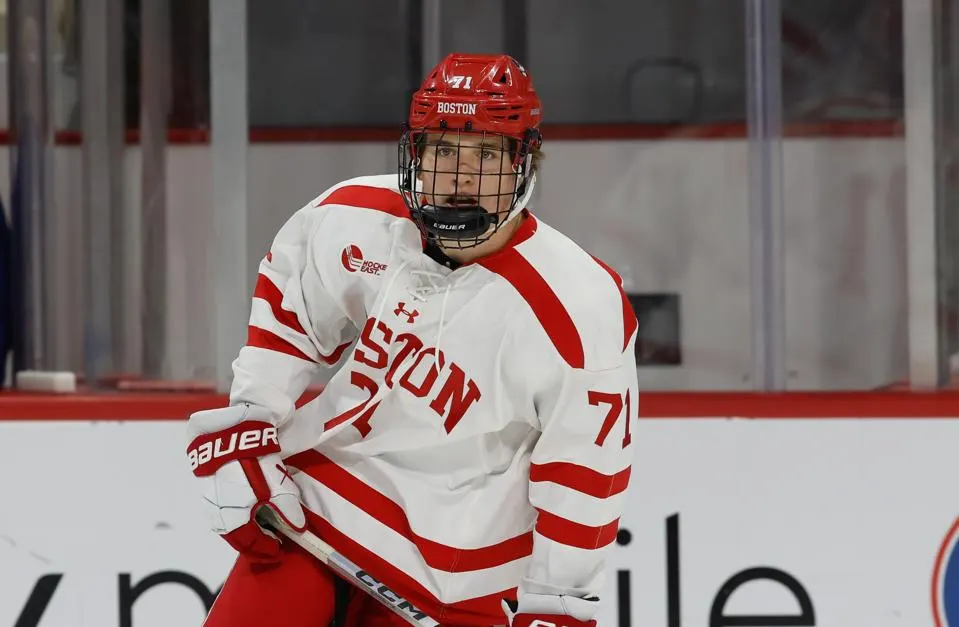How the NCAA-CHL Rule Change Is Redrawing Hockey’s Development Map.
Jul 23, 2025
Part 1 of our NCAA-CHL Series
For decades, the hockey world followed a fairly predictable map. If you were a high-end Canadian prospect, you went the CHL route. If you wanted time to grow while earning a degree, you went NCAA. The two systems ran in parallel, rarely intersecting, and almost never overlapping.
That changed in November 2024 when the NCAA approved a landmark eligibility shift.
Starting August 1, 2025, players from the Canadian Hockey League - including the WHL, OHL, and QMJHL -will be eligible to play NCAA Division I hockey, as long as they have not received compensation beyond actual and necessary expenses.
It may sound like a technicality. But it is not. It is a major turning point.
For the first time, players who begin their careers in the CHL can move into the NCAA system and continue playing. That opens a door that was previously sealed shut. And players are already walking through it.
The First Wave: Big Names Making Big Moves
Just days after the announcement, top CHL prospects started committing to NCAA schools.
-
Gavin McKenna, the first overall pick in the 2022 WHL Draft and a projected top NHL selection, announced he would leave the Medicine Hat Tigers and commit to Penn State.
-
Cole Reschny, a skilled forward from the Victoria Royals, committed to the University of North Dakota.
-
Malcolm Spence, a dynamic player from the Erie Otters, chose the University of Michigan.
These are not fringe names or depth players. These are top prospects with NHL futures, and they are choosing education, flexibility, and a different development model.
What used to be a hard fork in the road is now a wide-open interchange. And every route is on the table.
What This Means for the CHL

The CHL has always operated with a level of roster security. Once a player signed, teams could confidently invest in their development without the risk of losing them to college hockey. That stability shaped how franchises drafted, built rosters, and planned for the future.
Now, that certainty no longer exists.
With the new NCAA rule in place, CHL players have a viable path to college hockey. After each season, players are essentially free to explore new opportunities. Many will weigh their current situation against NCAA programs offering similar levels of hockey, access to higher education, and the added appeal of guaranteed NIL compensation.
CHL teams still provide high-quality coaching, structured schedules, and strong community support. But they are now competing with institutions that have larger budgets, deeper academic resources, and the ability to offer a full student-athlete experience.
What This Means for NCAA Programs
NCAA hockey just got deeper. The influx of CHL-trained players will raise the level of competition, especially in elite conferences like the Big Ten, NCHC, and Hockey East.
It also changes how coaches build rosters. With CHL players now available, programs must be ready to recruit players with more experience, higher ceilings, and immediate impact potential. The traditional four-year college player model could shift toward shorter windows and more turnover.
NCAA programs will need to evolve too. The most competitive schools are already offering top-end facilities, nutrition plans, coaching depth, and NIL support. Now, they also have access to a wider talent pool than ever before.
What This Means for Players and Families
More than anything, this rule change gives players what they have always needed: options.
At 15 or 16, very few players truly know what they want at 19. The ability to adjust, to grow, and to change course is invaluable. A player can now test the CHL route, then pivot to college if it makes sense. As long as compensation rules are followed, the option stays open.
It also helps the late bloomers, the undersized kids, and the players who just need more time. They are no longer forced to commit to a path they are not ready for. They can find the best fit at the right time.
This flexibility does not just change decisions. It changes development. Players can now build a plan that matches their timeline instead of being forced into one.
The New Development Map

What has changed is that players no longer have to pick one and close the door on the other. Now, they can build a journey that fits their goals, their growth, and their situation.
This new model is not about which league is better. It is about which path is better for each individual player.
We are entering a new era of hockey development. One that prioritizes options, flexibility, and long-term success. The map is wider. The roads are clearer. The decisions are smarter.
And for players and families, that is a very good thing. 🏒
About the Author:
Darrell is a proud WHL graduate of the Tri-City Americans who never had the option to move laterally between major junior and college hockey. Today’s players do, and that shift is changing everything. As the head coach of the Boise State Bronco Hockey Club, he is watching closely how this evolution will impact not just the NCAA, but college hockey as a whole. He is excited about the trickle-down effect to the ACHA and is committed to recruiting top-level talent to the Treasure Valley, with a long-term goal of building a Division I program in Boise, Idaho.



